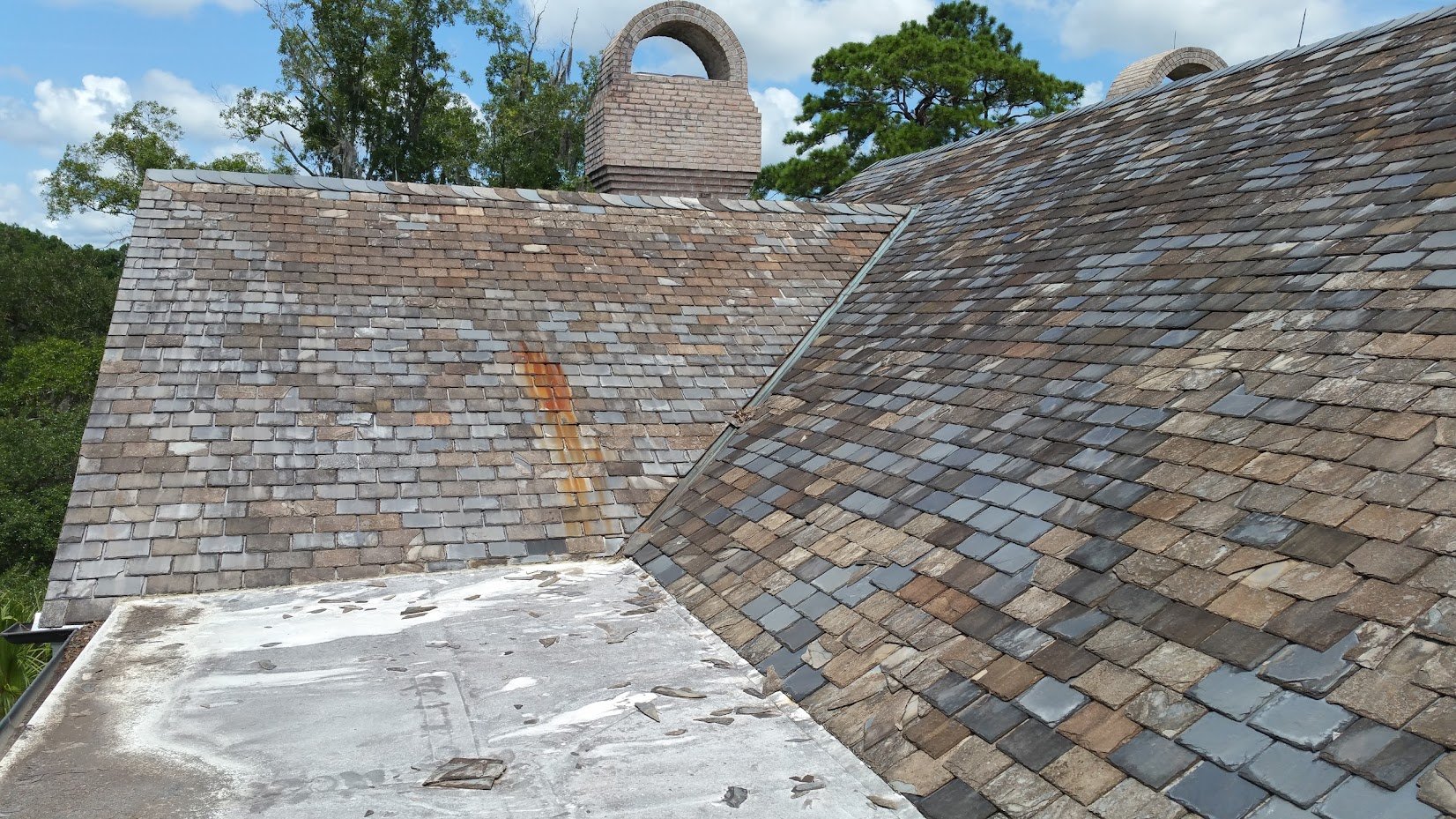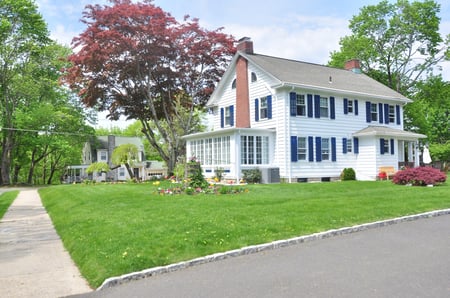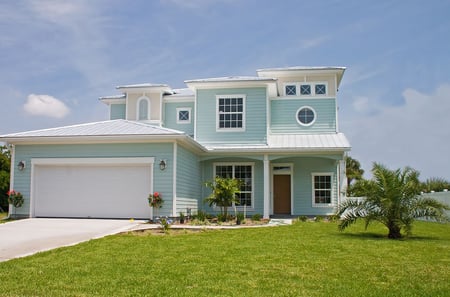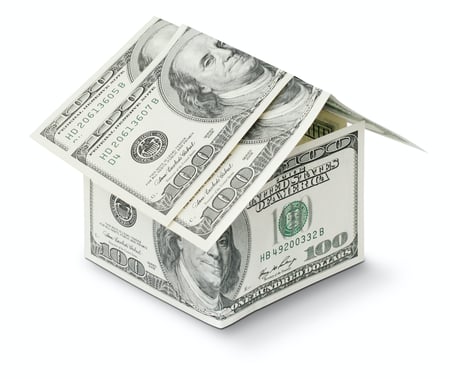
Calling all homeowners! Climate change is no longer a distant concern; it’s a present reality affecting various aspects of our lives, including the roofs over our heads. As global temperatures rise and weather patterns become more erratic, the impact on roofing systems is profound.
At RoofCrafters, we know just how climate change is affecting roofing and what adaptations are necessary to withstand extreme weather conditions, and we think it’s important that you know, too, so that we can all take the necessary steps in protecting one of our largest investments.
Take a deep breath, it’ll all be alright! Stick with me until the end of this article so you can learn exactly how climate change is affecting your roof, how you can help your home adapt, as well as the benefits of adapting for the future! Let’s get started.
The Changing Climate and Its Effects on Roofing

So, how exactly does climate change affect your roof? Let’s get into the nitty-gritty details:
Increased Temperature Extremes
One of the most noticeable effects of climate change is the increase in both average temperatures and the frequency of extreme heat events. Roofing materials, especially traditional asphalt shingles, are susceptible to heat damage. High temperatures cause these shingles to expand and contract, leading to cracking and deterioration over time. In regions experiencing unprecedented heat waves, this can significantly shorten the lifespan of a roof.
More Intense Storms
Climate change is also linked to more intense and frequent storms, including hurricanes, cyclones, and severe thunderstorms. These storms bring with them strong winds, heavy rainfall, and sometimes hail, all of which can cause significant damage to roofing. High winds can lift shingles, tiles, or even entire sections of roofing, while heavy rain can lead to leaks and water damage if the roofing system is not adequately sealed.
Increased Rain and Flooding
In many areas, climate change is causing shifts in precipitation patterns, leading to more frequent and severe rainfall events. Roofs are designed to shed water efficiently, but extreme rainfall can overwhelm drainage systems, leading to pooling water and potential leaks. Additionally, regions experiencing increased snowfall must contend with the added weight and the potential for ice dams, which can cause water to seep under shingles and into the home.
UV Radiation and Degradation
The increase in UV radiation due to ozone layer depletion and higher temperatures can accelerate the degradation of roofing materials. UV rays break down the chemical bonds in many common roofing materials, such as asphalt shingles and certain types of plastics, leading to brittleness and failure. This effect is particularly concerning in regions with high sun exposure.
Adapting Roofing Systems to Climate Change

Given these challenges, it’s clear that roofing systems must evolve to cope with the changing climate. Here are several strategies and innovations that can help:
Cool Roofs
Cool roofs are designed to reflect more sunlight and absorb less heat than standard roofs. They are typically made with highly reflective materials or coatings that reflect infrared light and reduce heat absorption. This not only helps to keep buildings cooler during hot weather but also reduces the thermal expansion and contraction that can damage roofing materials.
Durable Materials
Investing in more durable roofing materials can provide better resistance to extreme weather conditions. Metal roofs, for example, offer superior durability and can withstand high winds, heavy rain, and hail better than traditional asphalt shingles. Similarly, clay and concrete tiles are highly resistant to heat and UV radiation, making them a good choice for areas with high sun exposure.
Enhanced Wind Resistance
In regions prone to hurricanes and strong winds, roofing systems need to be designed with enhanced wind resistance. This can involve using stronger fasteners, installing hurricane straps, and ensuring that roof sheathing and decking are securely attached. Additionally, interlocking shingles or tiles can provide added protection against wind uplift.
Improved Insulation and Ventilation
Proper insulation and ventilation are crucial for maintaining the integrity of a roof in changing climates. Good insulation helps to regulate indoor temperatures, reducing the stress on roofing materials caused by thermal expansion and contraction. Adequate ventilation prevents the buildup of heat and moisture in the attic, which can cause damage to the roof structure and materials over time.
Advanced Waterproofing Techniques
To combat increased precipitation and potential flooding, advanced waterproofing techniques are essential. These might include the use of waterproof membranes, improved flashing details, and enhanced drainage systems. Ensuring that roofs are well-sealed and capable of shedding water efficiently is key to preventing leaks and water damage.
Green Roofs
Green roofs, or living roofs, are another innovative solution that can help mitigate the impact of climate change. These roofs are covered with vegetation, which provides natural insulation, reduces heat absorption, and helps manage stormwater runoff. Green roofs can also improve air quality and reduce the urban heat island effect, making them a sustainable option for urban areas.
The Economic and Environmental Benefits of Adaptation

While adapting roofing systems to withstand extreme weather may involve higher upfront costs, the long-term benefits can outweigh these initial investments. Enhanced durability and resilience mean fewer repairs and replacements over time, leading to cost savings for homeowners and businesses.
Environmentally, many of these adaptations can contribute to energy efficiency and sustainability. Cool roofs and green roofs, for example, reduce the need for air conditioning, thereby lowering energy consumption and greenhouse gas emissions. Durable materials that last longer also mean less waste going to landfills.
Policy and Regulation
To facilitate the widespread adoption of resilient roofing practices, supportive policies and regulations are essential. Building codes need to be updated to reflect the realities of a changing climate, mandating the use of materials and techniques that can withstand extreme weather. Incentives such as tax credits or rebates for installing energy-efficient and durable roofing systems can also encourage homeowners and businesses to make these investments.
The Role of Professionals
Roofing professionals play a critical role in adapting to climate change. They need to stay informed about the latest materials, technologies, and techniques that enhance the resilience of roofing systems. Continuous education and training are essential for roofing contractors to provide the best solutions to their clients.
Also, collaboration among architects, engineers, builders, and roofing contractors is necessary to design and implement roofing systems that are not only functional and aesthetically pleasing but also resilient to the challenges posed by climate change. Remember to always schedule your initial roof inspection with trained professionals!
Roofing for the Future in a Changing Climate

As you now know, climate change is a complex and multifaceted issue that requires a comprehensive response, including in the realm of roofing. As extreme weather becomes more common, the need for resilient and sustainable roofing solutions is more pressing than ever.
By investing in durable materials, innovative designs, and advanced technologies, we can ensure that our roofs continue to protect us from the elements, no matter how severe they become. The impact of climate change on roofing is a clear example of how our built environment must adapt to the new realities of our world.
Through thoughtful planning, informed decision-making, and a commitment to resilience, we can meet these challenges head-on and create roofing systems that stand the test of time and weather. If you’re interested in upping the ante for your current roofing system to help it resist climate change, or you’re interested in a replacement, be sure to hit the “Schedule an Inspection” button down below!
My name is David Toth and I am the lead estimator in North Florida with RoofCrafters Roofing. Originally from New Brunswick, I have called Florida home for the past 47 years. I enjoy cooking along with traveling to different historical areas in Florida when I have free time.



